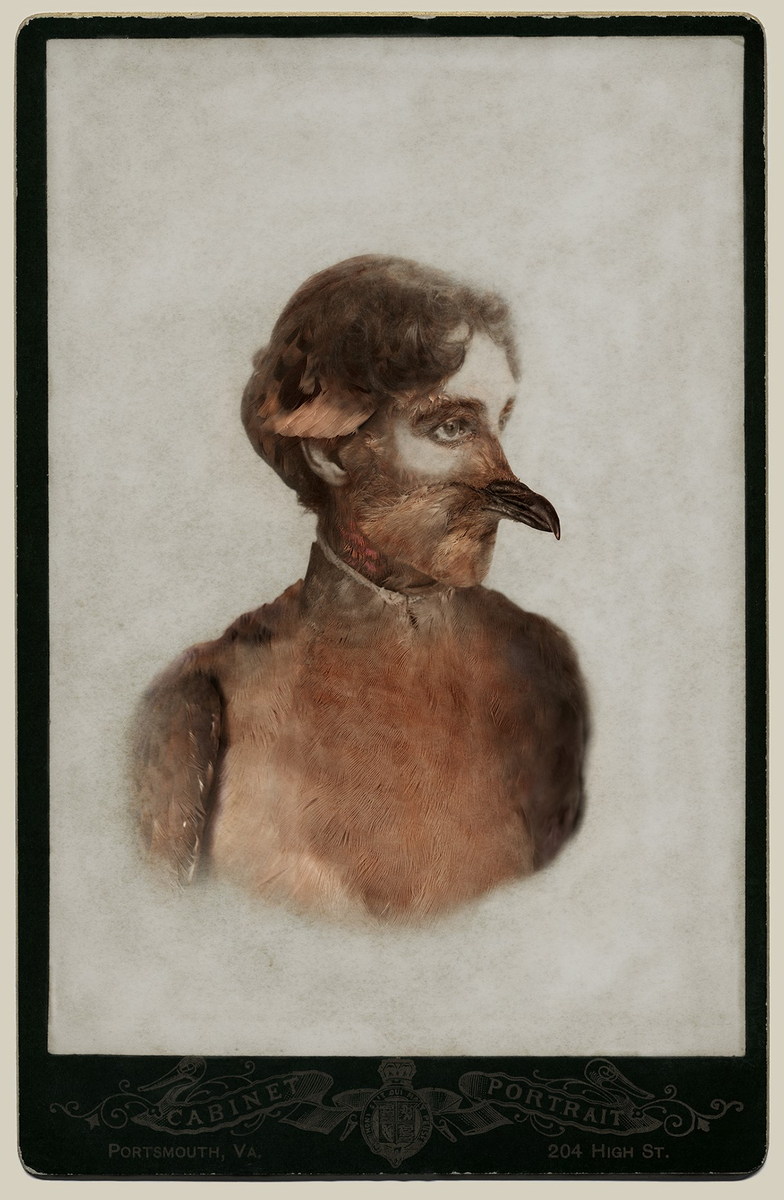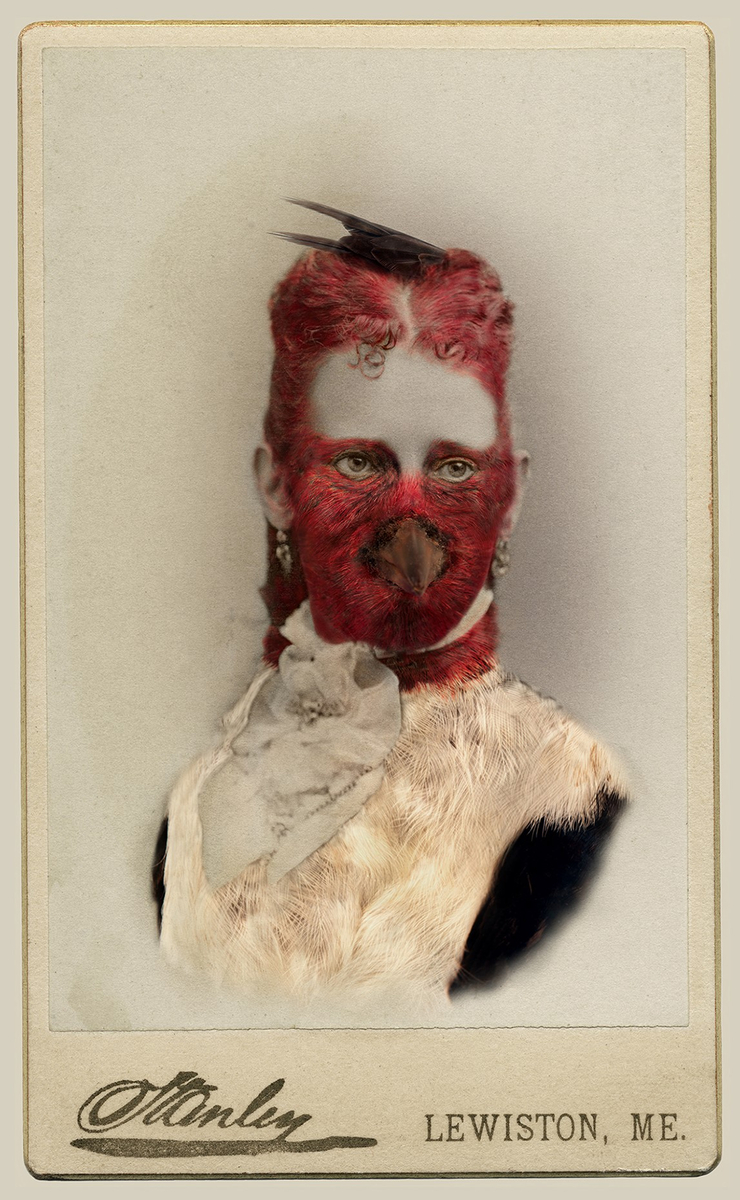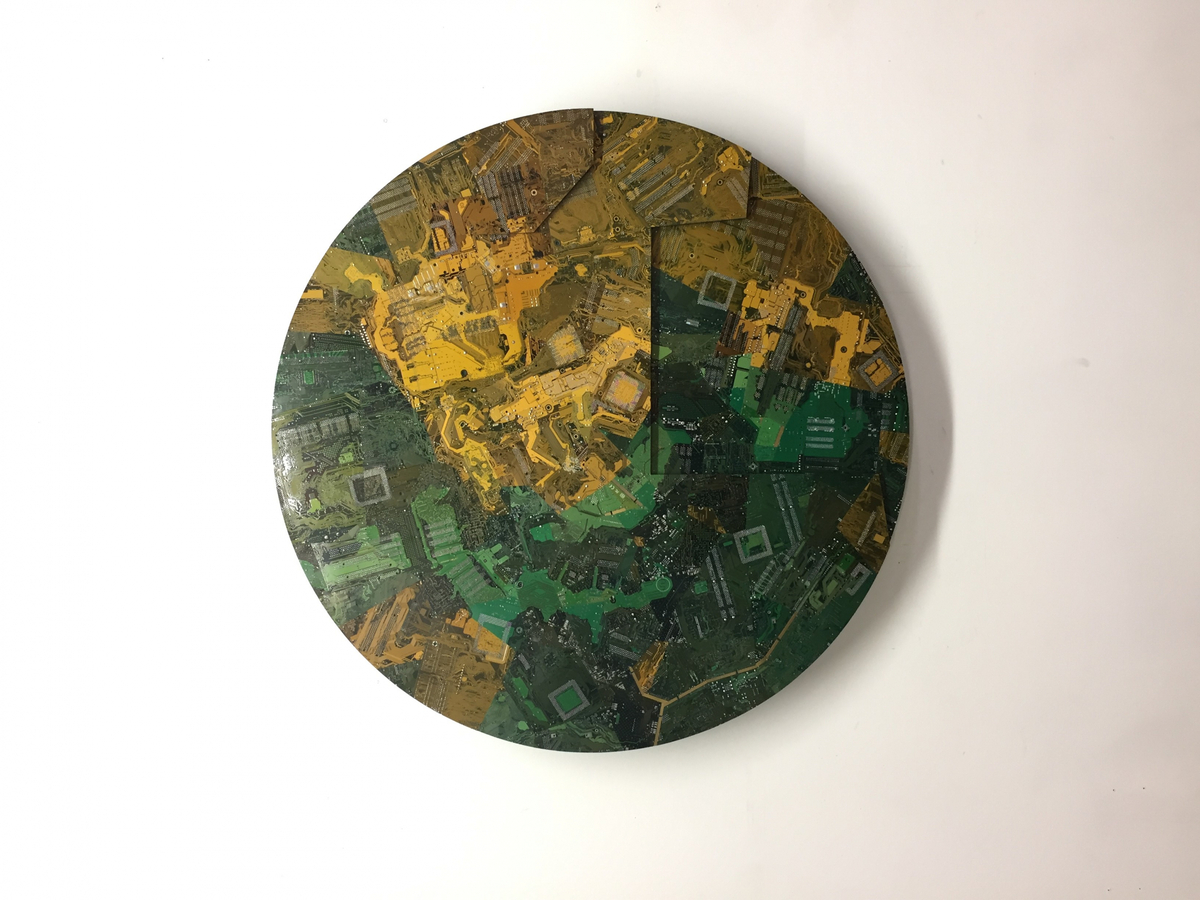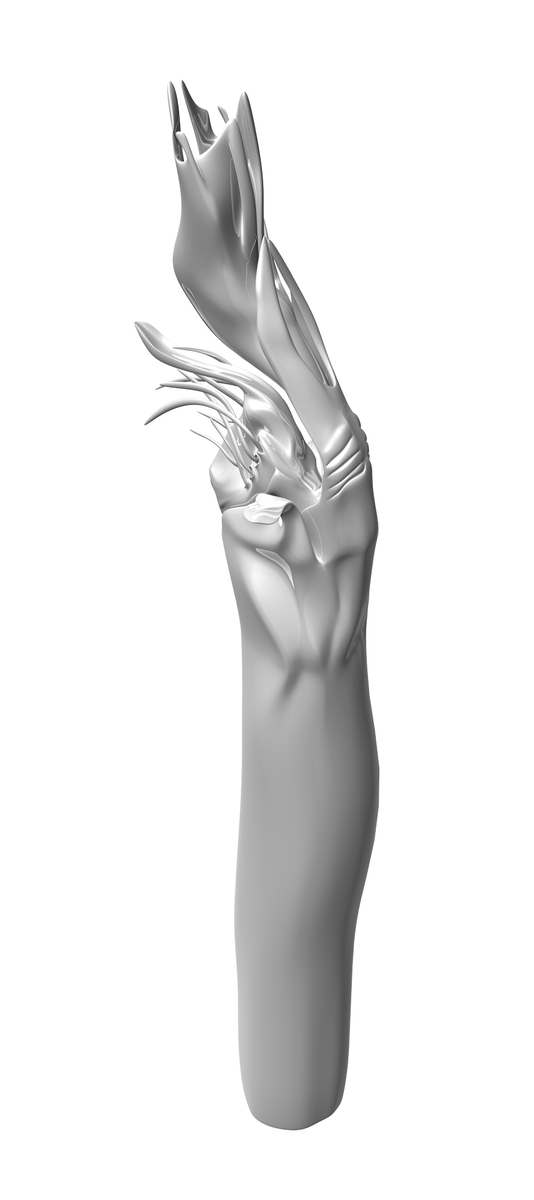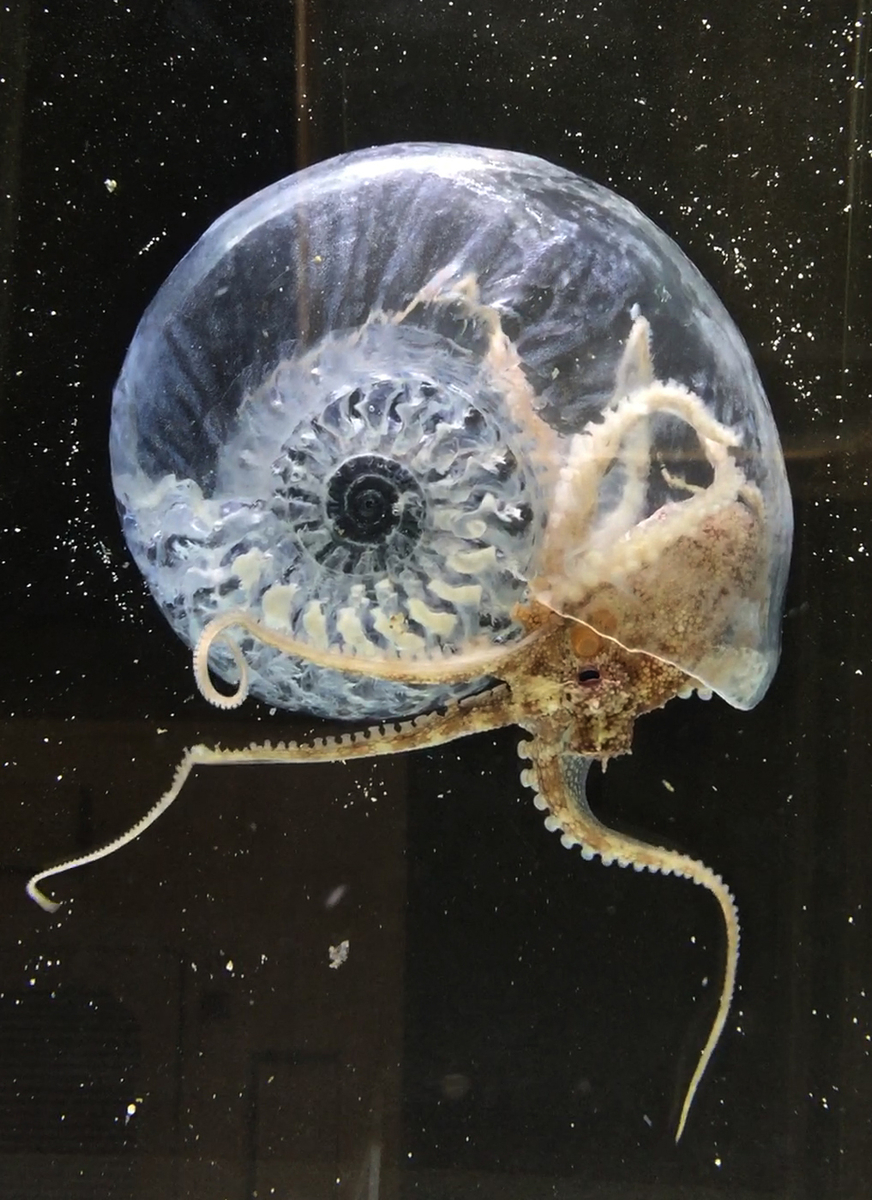Group Exhibition Digital Animalities
- Sara Angelucci
- Ingrid Bachmann
- Maria Fernanda Cardosa
- Wally Dion
- Aki Inamota
- Julie Andreyev and Simon Lysander Overstall
- Jonathon Keats
- Ken Rinaldo
- Lou Sheppard
- Donna Szoke
- Neozoon
- Gwen MacGregor
Digital Animalities: Rendering
CONTACT Gallery
November 1–December 15, 2018
Digital Animalities: Mapping
John B. Aird Gallery
October 30–November 23, 2018
Curated by Giovanni Aloi and Matthew Brower
Curatorial Assistant Seb Roberts
Digital Animalities is part of a SSHRC-funded research project entitled “Digital Animalities: Media Representations of Nonhuman Life in the Age of Risk” led by Jody Berland of York University.
Digital Animalities is a two-venue exhibition of artworks exploring human animal interactions in an age of risk. Digital technologies have been reshaping human understandings of animals and transforming the possibilities for human-animal relations. Artists have been at the forefront of exploring these challenges, using the languages and forms of artistic practice to stage, explore, and intervene in these emerging situations. These works present a range of approaches to the themes. They offer models for understanding new possibilities provided by new technologies, critiques of implicit tendencies in the workings and organizations of these technologies, and classifications and frameworks for orienting ourselves to these new possibilities.
Loosely organized under two major tendencies presented in the works, the two venues present complementary experiences of the evolving space of animality in contemporary digital culture. At the John B. Aird Gallery, the theme of Mapping brings together works that suggest how new cartographies organize and orient us. At the CONTACT Gallery, the theme of Rendering brings together works that reveal digital technology’s ability to scan and re-assemble aspects of reality.
Rendering
Rendering refers both to the process of reducing something to its component parts and to the practice in digital image making of synthesizing a set of data into an image. One of the strategies that artists have employed in thinking about animality has been to explore these two aspects of digital technology: the ability to break things down into parts while preserving relationships between elements and the ability to recombine things by performing manipulations on the resulting data. The artists in the show make use of these possibilities in a number of ways. In some work the rendering is literal and physical while in others the possibilities of transformation offered by rendering are central to the work.
Maria Fernanda Cardoso’s Museum of Copulatory Organs is, on a straightforward level, an exploration of the diversity of animal genitalia. Based on contemporary imaging techniques, including electron microscope scans, the work presents digital models of animal penises rendered photographically and through 3D printing. They cheekily stage the way that new technologies of scanning and reproduction have made different parts of the natural world available to us. In presenting them to us at a human scale they both invite us to engage kinesthetically with species difference and make possible new pleasures in their transformation of microscopic genitalia to the scale of sex toys.
Aki Inomata’s Think Evolution #1 Kiku-ishi (Ammonite) proposes new perspectives on the evolutional lives of octopi as seen through the transparency of a digitally scanned and printed shell. In the piece, an octopus enters the shell, feels it inside and out with its tentacles, before finally curling up inside it. Shot from above, the rippling water of the tank provides a subtle distortion to the image while the grains of sand scattered against the black backdrop produce the illusion of deep space. The transparency of the shell allows us to gaze at the octopus’s ability to recognize the shell as a congenial enough shape to decide to fit its body into it. Aki’s gift to the octopus allows it to restage an earlier phase of the species’ evolutionary history and to momentarily reconnect with its ancestries.
In cutting up and reassembling circuit boards, Wally Dion uses the substrate materials of the digital age to create pictographs. In caterpillar moth egg chrysalis, he has rearranged the photographically etched patterns of the board; reorienting their architecture from transmitting and controlling electrical impulses into new pathways for that enable other energies to manifest. Overall, the combined pieces resemble rock surfaces and aerial photographs. Influenced by Woodland School aesthetics, the insect that emerges from the surface is a contemporary vision of traditional imagery. In expressing traditional spirituality in contemporary materials caterpillar moth egg chrysalis resists straightforward notions of technological optimism while offering an image of indigenous futurity.
Puzzling shapes of black neoprene, Ingrid Bachmann’s Pelt sculptures offer an affective experience of the ever-increasing ability for technology to mimic life. The rubber strands function as fur and the animatronic motors and sensors underneath the sculptures’ skins allow them to pulse and quiver. Using proximity sensors and robotic servers, the sculptures respond to visitor presence. Quivering with “life” these uncanny objects give the impression of vitality. Physical and visceral manifestation of contemporary technology’s ability to create objects and processes that algorithmically act as our stand-ins.
Sara Angelucci’s Aviary series combines photographs of extinct birds taken at the ROM with found photographs of anonymous individuals from the 19th century. The cartes-de-visite images used by Angelucci were used to assert social identity and status by their sitters. Through their circulation, the images have been separated from their sitters’ identities. Their now anonymous assertion of individual identity and pride have been reanimated by Angelucci as a vehicle to give face to extinct species. Her careful digital compositing of the images draws the viewer into an affective chain, asking us to consider our deaths and bird deaths on equivalent grounds
Mapping
The emergence of large datasets as a byproduct of digital communication has created new possibilities of social analysis and control. These possibilities also enable the creation and visualization of new knowledges about human-animal relations, allow pernicious social influences to be made visible, and make visible otherwise invisible aspects of our changing lives. By mapping and exploring these newly opened territories, the works showcased in this section of the exhibition present possibilities for orientating ourselves to risks posed by these coming realities.
In Navigational System for Birds, Jonathon Keats proposes an absurdist technological solution to the very real problem of disrupted migration routes caused by human development and the resultant death of millions of birds every year. Keats’ proposed system of air traffic control towers shows what would be possible if we re-oriented societal priorities to encompass all species, while simultaneously questioning the human tendency to rely on technology to address the problems caused by technological excess. Using off-the-shelf components to override Earth’s geomagnetic field, Keats has constructed a prototype control system that would re-route birds around human structures and guide them to optimal places to nest.
Neozoon’s My BBY 8L3W and Good Boy – Bad Boy skillfully weave together found footage to create provocative and disturbing loops. In these videos a range of people record and broadcast interactions with their beloved animals to the world through social media and content sharing platforms. Individually, each of these interactions is potentially cute or charming but, presented as part of a larger pattern, the effects of the interactions shifts. By cutting and split screening, they highlight the spread of culturally specific forms of animal interaction only made visible in the age of social media.
Lou Sheppard’s Silent Spring explores issues of mediation and documentation of animal behaviour. The artist has transformed a series of spectograms based on field recordings of songbirds, a form of visual representation of bird song produced by ornithologists, and laser cut them into paper. The resulting forms make the patterns of the birds’ calls visible as an absence rather than a presence. The title of the series references Rachel Carson’s famous argument against the over use of pesticides and the need to preserve bird habitats pointing to the limitations of documentation for preserving and understanding species.
Donna Szoke’s Invisible Histories is a downloadable app in which glowing green mice navigate across the surface of your device towards an offscreen destination. As your screen moves the mice reorient themselves always heading to a single place. The mice are headed towards a repository in upstate New York where several hundred thousand radioactive mice corpses have been interred. The product of animal experiments, the bodies of these mice have become hazardous waste and need special containment to avoid environmental contamination. The app reanimates these mice; their digital ghosts constantly seek their bodies and ask us to consider the legacies of our animal interactions.
Gwen MacGregor’s pair of videos Seamus and Me present the digitized evidence of the artist’s early adoption of the possibilities of the now ubiquitous GPS. These two videos animate the differing trajectories of the artist and a friend’s dog as they took two hikes in the interior of B.C on Ktunaxa traditional territory. The differential occupation of space and time by the two bodies is made visible by the use of the tracking technology that has become ubiquitous in contemporary culture. Unlike the current frequent use of the GPS in our mobile devices to continually report our locations to unknown parties for unknown purposes, this project employed the technology to make visible the specific and interconnected experiences of a dog and a person on a mountain.
Julie Andreyev and Simon Lysander Overstall’s *glisten) HIVE explores our networked society’s shifting engagements with nonhuman beings. The project uses Twitter as a resource base, and in this exhibition, explores the lexicon of bird-related terminology and discussion, and recasts this archive into word-flocks within a two-channel video display. By collating and algorithmically transforming users’ words into biomimicked movement, the piece presents a version of our current musings, pre-occupations, political positions, and biological findings as a complex textual moving-picture of the English-speaking world’s contemporary thoughts and feelings on birds and human relations with them. A live soundscape of many bird voices is generated by applying a granular computational approach to the artists’ recordings of birds. In these ways, the sonic communications of birds and the textual expressions of humans commingle and dialogue.
Ken Rinaldo’s Trans Species are images of imagined animal/seeds hybrids materialized through 3D visualization technologies. The abstract form synthesizes animal body parts and movements into plants’ strategies and morphologies of reproduction. These abstracted interdependencies between animals and plants are simultaneously evolutional and actual, historical and contemporary. It is so that these digital hybrids bypass the notion of species and kingdom to offer an opportunity to consider alternative biological visualizations bypassing the fixity of natural history taxonomy in the face of climate change. Mirroring the strategies of genetic recombination present in agricultural laboratories, Rinaldo’s work gives visible form to practices already being commercialized by capitalist systems with CRISPR-Cas9 gene splicing.
Presented in partnership with CONTACT Gallery and John B. Aird Gallery.
Sara Angelucci is a Toronto-based artist and Adjunct Professor of Photography at Toronto Metropolitan University. For the past ten years her projects in photography, video, and audio have engaged with environmental concerns exploring the plight of birds, forests, and plants. Angelucci completed her BA at the University of Guelph and her MFA at the Nova Scotia College of Art and Design. She has exhibited across Canada in the US, Europe, and China and been an artist in residence at the Art Gallery of Ontario, NSCAD (Halifax), the Banff Centre, and Biz-Art in Shanghai. She has been supported by the Toronto Arts Council, the Ontario Arts Council, the Canada Council, and was nominated for the 2022 Scotiabank Photography Award. Her work is held in numerous public and private collections.
